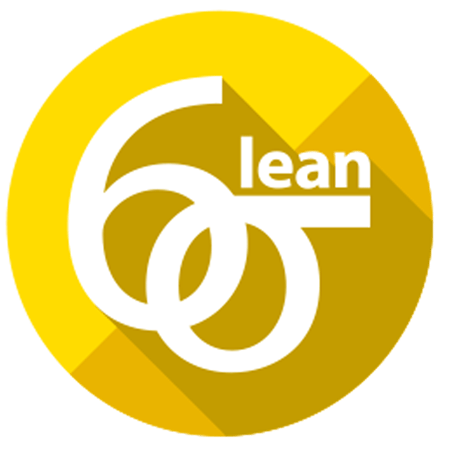- Corporate
- 50 (Registered)
-
(0 Review)

Six Sigma is an improvement methodology that identifies and removes the basic causes of error in any business process. It aims at minimizing variability and eliminating marginal methods that are used in traditional contexts. Six Sigma professionals work towards enhancing productivity, reducing turn-around times and achieving financial benefits.
The Six Sigma Yellow Belt is the second level of certification, after the White Belt. Certified Yellow Belts can work as a team member in a Six Sigma Project Team. Yellow Belts are responsible for monitoring and evaluating work progress and process enhancements. They work to support, or under the supervision of a Six Sigma Green Belt or Black Belt. Six Sigma certified professionals work on continual quality improvement by analyzing and solving quality problems, and creating a high performance organization.
This course will give you a basic understanding of Six Sigma and its focus on eliminating defects through process improvement and variation reduction by applying Six Sigma improvement projects. The course content efficiently covers all of the recognized Six Sigma Yellow Belt topics in a comprehensive manner. Thousands of companies across the world have discovered the far-reaching benefits of this methodology; with this certification you can gain a basic understanding of the Six Sigma concepts, and get insights into the techniques, metrics and basic improvement methodologies
Prerequisites
In order to achieve IASSC Certified Yellow Belt (ICYB) from the International Association for Six Sigma Certification, candidates must sit for the IASSC Certified Lean Six Sigma Yellow Belt Exam and achieve a passing score (>70%). There are no prerequisites required to sit for the IASSC Certified Lean Six Sigma Yellow Belt Exam. For more about this please visit the FAQ’s page http://www.iassc.org/faqs/
Course Content
Curriculum is empty
Curriculum
- The Basics of Six Sigma
- Meanings of Six Sigma
- General History of Six Sigma & Continuous Improvement
- Deliverable of a Lean Six Sigma Project
- The Problem Solving Strategy Y = f(x)
- Voice of the Customer, Business and Employee
- Six Sigma Roles & Responsibilities
- Critical to Quality Characteristics (CTQ’s)
- Cost of Poor Quality (COPQ)
- Pareto Analysis (80:20 rule)
- Basic Six Sigma Metrics: a. including DPU, DPMO, FTY, RTY Cycle Time, deriving these metrics and these metrics
- Building a Business Case & Project Charter
- Developing Project Metrics
- Financial Evaluation & Benefits Capture
- Understanding Lean
- The History of Lean
- Lean & Six Sigma
- The Seven Elements of Waste: a. Overproduction, Correction, Inventory, Motion, Over processing, Conveyance, Waiting
- Straighten, Shine, Standardize, Self-Discipline, Sort
- Cause & Effect / Fishbone Diagrams
- Process Mapping, SIPOC, Value Stream Map
- X-Y Diagram
- Failure Modes & Effects Analysis (FMEA)
- Basic Statistics
- Descriptive Statistics
- Normal Distributions & Normality
- Graphical Analysis
- Precision & Accuracy
- Bias, Linearity & Stability
- Gage Repeatability & Reproducibility
- Variable & Attribute MSA
- Capability Analysis
- Concept of Stability
- Attribute & Discrete Capability
- Monitoring Techniques
- Lean Controls
- Control Methods for 5S
- Kanban
- Poka-Yoke (Mistake Proofing) Control Phase
- Cost Benefit Analysis
- Elements of the Control Plan
- Elements of the Response Plan
Course Details
Duration: 1 Day
Venue: TBA
Career Pathways
- Learn the principles and philosophy behind the Six Sigma method
- Learn to gather data, and participate in problem solving
- Gain an understanding of processes, in order to provide assistance to achieve organizational objectives
- Learn to start the first statistical process improvement initiative
- Learn to identify and control wasteful processes
- Learn to evaluate daily activities, to reduce cycle times, and improve quality
- Evaluate problems, statistically and quantitatively
- Give data to, and assist Green Belts and Black Belts
- Increase profitability using Six Sigma methodology
- Prepare for the Six Sigma Yellow Belt certification exam
- 1 day Instructor-led classroom course
- 8 PDUs
- Downloadable e-book
Certification
0 rating





